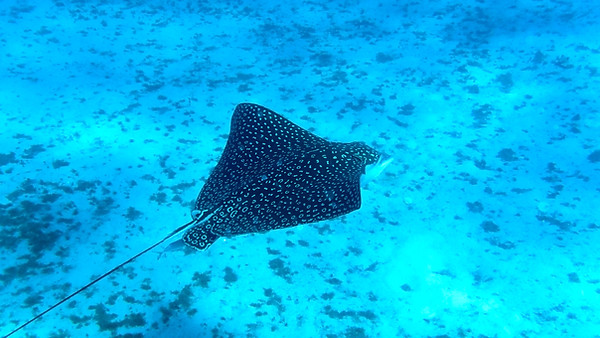
manta ray
One Animal at a Time

Manta rays
The largest rays in the world are manta rays and there are two species of them, the reef manta ray and the giant oceanic manta ray.
They are iconic species, harmless giants that inhabit the oceans and are classified as Vulnerable to Extinction on the IUCN Red List.
They face challenges such as climate change, fishing, ship strikes, unsustainable tourism and entanglement in mooring lines.

Raising awareness about manta rays, their natural habitat and climate change
Explore the sea beyond the surface through the pages I have written and designed to disseminate the importance, behavior, challenges and solutions for manta rays.

Support and dissemination of ID the Manta, a citizen science project of the Manta Trust
The spots identify the mantas. Each manta ray has unique spot patterns on its underside that remain almost unchanged throughout its life, which we use to identify them.
Photographs that include these patterns provide an important record of when and where individual manta rays were sighted.
It is possible that, in the early stages of the offspring's development, random genetic mutations in the stem cells are responsible for this very different species of pigmentation. Therefore, if a manta gave birth to twin (genetically identical) pups, the ventral pattern of both series would be different.
These patterns act just like a human fingerprint.
The unique shape of these spots makes it possible for scientists to identify each manta individually by photographing their ventral surfaces.
It is a simple and non-invasive technique that leads to the development of photographic identification databases of an entire population of mantas, so that we can calculate the size and spatial and seasonal movements of this population. By knowing this information we can reveal key habitats for feeding and reproduction, and migration patterns that are necessary to act in the conservation of these animals.
Each manta sighting is a key piece of a huge puzzle. If you've seen a manta ray anywhere in the world, you can contribute directly to the global research and conservation efforts of The Manta Trust. Submit your images along with basic information about the sighting to IDtheManta (their database) and you will receive feedback on the individual manta you saw.
How do I take the photo?
The most important thing is that in your photo you see the ventral surface (belly) of the manta, which allows you to show its sex and you can obtain the proportions of females and males in the population. Next to the identification photo, the date/time of the encounter and the location (detailing the dive site, region and country) are required to add this sighting to your database.

Promoting responsible and conscious interactions with marine life
The manta ray is a very ecological species for marine biodiversity that lives in the oceans. We know more about the Moon than we do about the deepest places in the ocean. The threats facing these marine animals are ringing alarm bells, but are we listening?
Manta rays control the abundance and diversity of plankton and regulate nutrient cycling. Reef manta rays dive between the ocean surface and the deep sea, creating a valuable ecological connection between the two areas.

Climate action to restore ocean health
Manta rays are gentle and elegant beings that strengthen the balance of the ocean. However; the climate emergency changes their natural environment and increases their fragility. It is estimated that mantas, which inhabit temperate seas around the world, have suffered a population decline of 30%, and even 80% in some areas of the planet.
